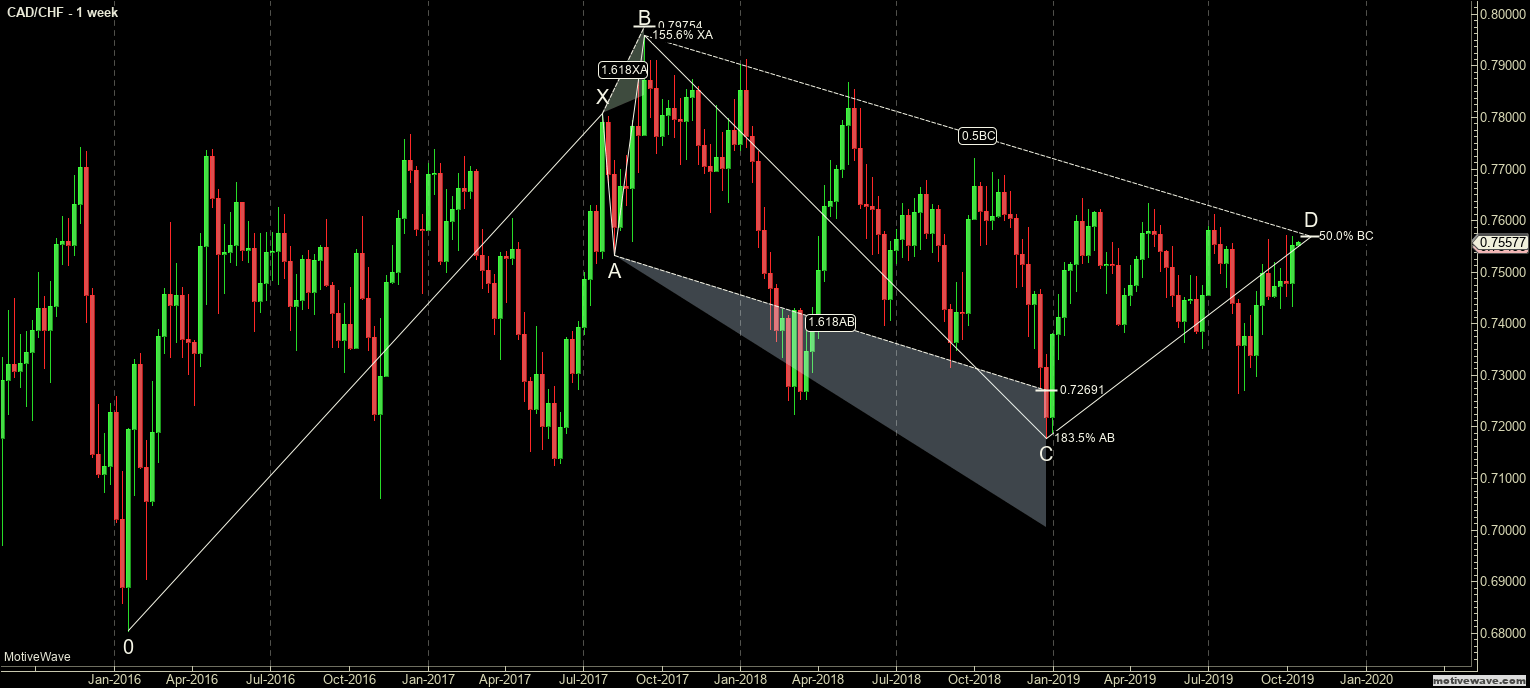Harmonic Pattern Example: Bearish 5-0 Harmonic Pattern
The 5-0 Harmonic Pattern
Like the Shark Pattern, the 5-0 pattern is a relatively new pattern discovered by the great Scott Carney. Carney revealed this pattern in his second book in his harmonic series, Harmonic Trading: Volume Two.
The 5-0 pattern is easily one of the wonkiest looking patterns. Depending on where you are at with your knowledge of harmonic patterns, the 5-0 will look foreign. And this is primarily because the 5-0 Pattern starts a 0. If you are used to seeing XABCD, then 0XABCD will undoubtedly look odd.
5-0 Elements
- The pattern begins (begins with 0) at the beginning of an extended price move (direct quote from Carney’s work).
- After 0 has been established, an impulse reversal at X, A, and B must possess a 113 – 161.8% extension.
- The projection off of AB has a 161.8% extension requirement to C. C can move beyond the 161.8% extension but not beyond 224%.
- D is the 50% retracement of BC and is equal to AB (a Reciprocal AB=CD Pattern).
- The reciprocal AB=CD is required.
One of the best ways to interpret this pattern is to view it from an exasperated trader’s point of view. If we take the Bullish 5-0 Pattern as an example, then we can see why. The AB leg ends with B below X, creating a lower low. We then get an extended move in time where the BC leg is the most prolonged move with C ending above A. The movement from B to C may take on the appearance of a bear flag or bearish pennant. C to D shows intense shorting pressure and a belief among bears that new lows are going to be found. Instead, we get to D – the 50% retracement of BC. Instead of new lower lows, we get a confirmation swing creating a higher low. That move will more than likely generate a brand new trend reversal or significant corrective move.
Sources: Carney, S. M. (2010). Harmonic trading. Upper Saddle River, NJ: Financial Times/Prentice Hall. Gilmore, B. T. (2000). Geometry of markets. Greenville, SC: Traders Press. Pesavento, L., & Jouflas, L. (2008). Trade what you see: how to profit from pattern recognition. Hoboken: Wiley.

